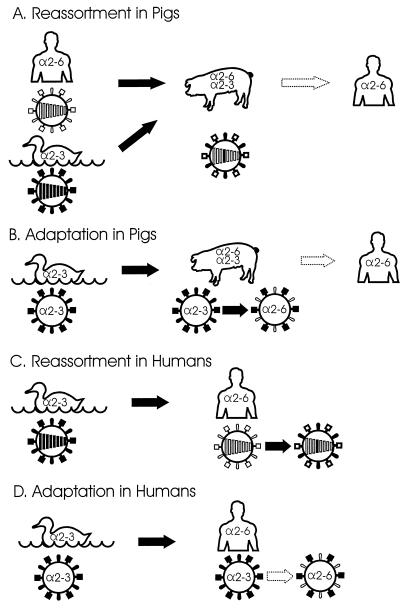FIG. 5.
Models for the generation of pandemic influenza virus strains in pigs. (A) In the classical genetic reassortment model, avian and human viruses bind, respectively, to NeuAcα2,3Gal and NeuAcα2,6Gal (α2,3 and α2,6) linkages in pig trachea, setting the stage for the emergence of a reassortant that infects a large fraction of the human population. The segments in the center of each particle represent the viral genome. The reassortant HA gene (black) is derived from an avian virus. (B) In this adaptation model, avian viruses acquire the ability to replicate efficiently in humans during adaptation to the NeuAcα2,6Gal linkage in pigs. This change is mediated by a mutation in the HA gene. (C) Alternatively, an avian influenza virus is transmitted directly to humans where it reassorts with a human virus, or (D) it acquires the ability to recognize the NeuAcα2,6Gal linkage after direct introduction from birds, leading to efficient replication in humans.

